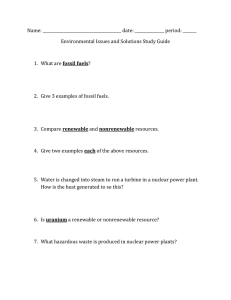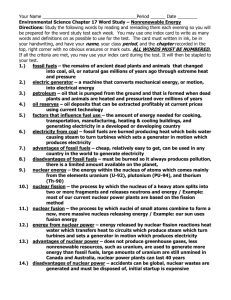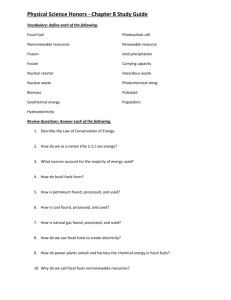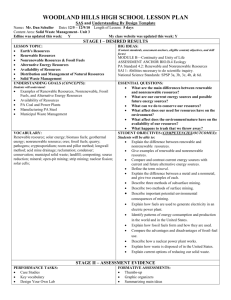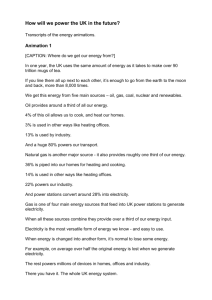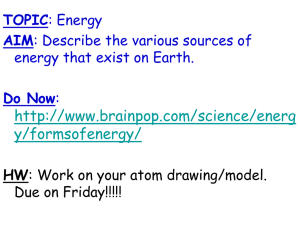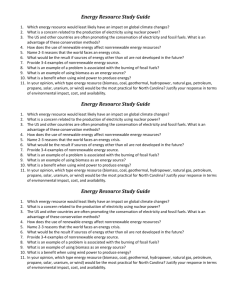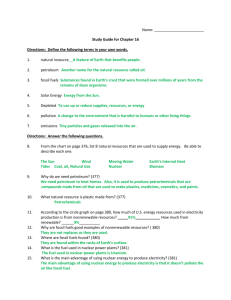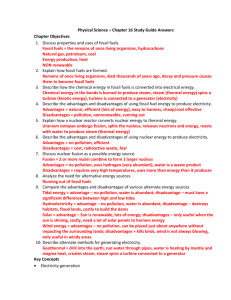File - Mr. Carter`s Earth
advertisement
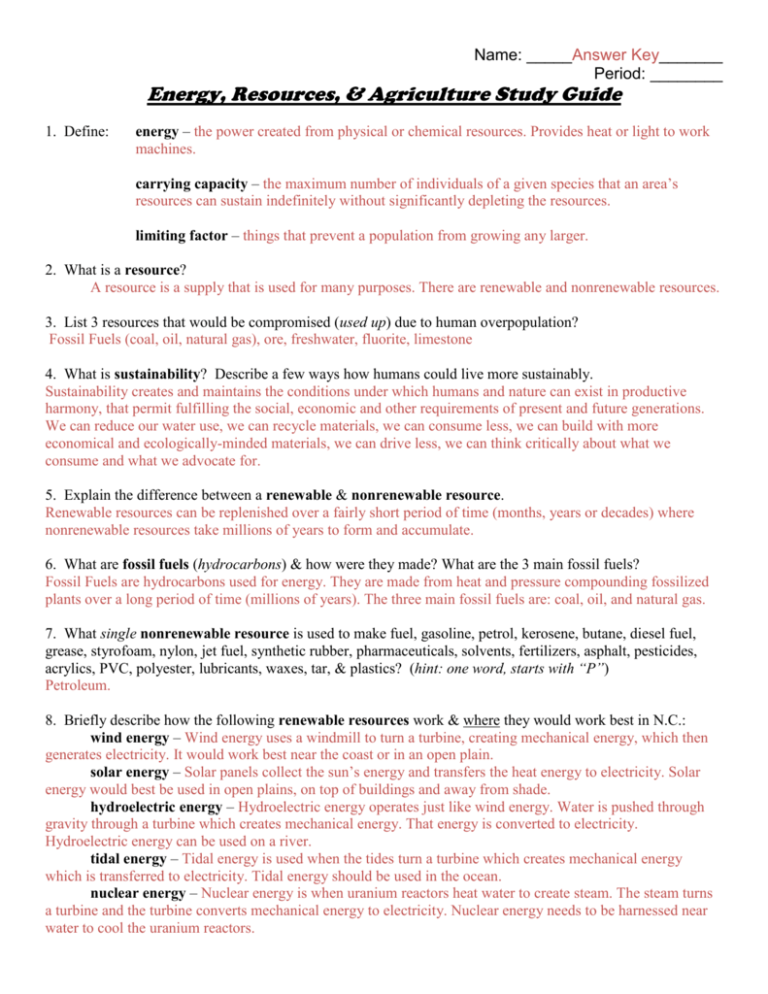
Name: _____Answer Key_______ Period: ________ Energy, Resources, & Agriculture Study Guide 1. Define: energy – the power created from physical or chemical resources. Provides heat or light to work machines. carrying capacity – the maximum number of individuals of a given species that an area’s resources can sustain indefinitely without significantly depleting the resources. limiting factor – things that prevent a population from growing any larger. 2. What is a resource? A resource is a supply that is used for many purposes. There are renewable and nonrenewable resources. 3. List 3 resources that would be compromised (used up) due to human overpopulation? Fossil Fuels (coal, oil, natural gas), ore, freshwater, fluorite, limestone 4. What is sustainability? Describe a few ways how humans could live more sustainably. Sustainability creates and maintains the conditions under which humans and nature can exist in productive harmony, that permit fulfilling the social, economic and other requirements of present and future generations. We can reduce our water use, we can recycle materials, we can consume less, we can build with more economical and ecologically-minded materials, we can drive less, we can think critically about what we consume and what we advocate for. 5. Explain the difference between a renewable & nonrenewable resource. Renewable resources can be replenished over a fairly short period of time (months, years or decades) where nonrenewable resources take millions of years to form and accumulate. 6. What are fossil fuels (hydrocarbons) & how were they made? What are the 3 main fossil fuels? Fossil Fuels are hydrocarbons used for energy. They are made from heat and pressure compounding fossilized plants over a long period of time (millions of years). The three main fossil fuels are: coal, oil, and natural gas. 7. What single nonrenewable resource is used to make fuel, gasoline, petrol, kerosene, butane, diesel fuel, grease, styrofoam, nylon, jet fuel, synthetic rubber, pharmaceuticals, solvents, fertilizers, asphalt, pesticides, acrylics, PVC, polyester, lubricants, waxes, tar, & plastics? (hint: one word, starts with “P”) Petroleum. 8. Briefly describe how the following renewable resources work & where they would work best in N.C.: wind energy – Wind energy uses a windmill to turn a turbine, creating mechanical energy, which then generates electricity. It would work best near the coast or in an open plain. solar energy – Solar panels collect the sun’s energy and transfers the heat energy to electricity. Solar energy would best be used in open plains, on top of buildings and away from shade. hydroelectric energy – Hydroelectric energy operates just like wind energy. Water is pushed through gravity through a turbine which creates mechanical energy. That energy is converted to electricity. Hydroelectric energy can be used on a river. tidal energy – Tidal energy is used when the tides turn a turbine which creates mechanical energy which is transferred to electricity. Tidal energy should be used in the ocean. nuclear energy – Nuclear energy is when uranium reactors heat water to create steam. The steam turns a turbine and the turbine converts mechanical energy to electricity. Nuclear energy needs to be harnessed near water to cool the uranium reactors. 10. Describe each of the following & give 2 examples of resources obtained this way. harvesting – collecting material above the earths surface. Ex: Forestry, collecting peat, crops. mining – digging deep into the ground to collect resources. Ex: Diamonds, gold, coal drilling – putting a well thousands of feet underground to reach natural gas or oil. Ex: oil, gas, 11. Explain the difference between surface mining & subsurface mining (include 2 advantages & 2 disadvantages of each). Surface mining is when resources are collected by mining from the top of an area and working down. Subsurface mining is less destructive to the environment, but more expensive. There are many dangers such as a mine collapsing, or an explosion of natural gas stores. 12. Define: agriculture – The cultivation of animals, plants, for food, fuel, drugs, and other products. pesticide – a substance meant to prevent, destroy or mitigate a pest. fertilizer – any organic or inorganic material added to make a plant grow faster, hardier through supplying nutrients. compost-- Organic matter that has been decomposed and recycled as a fertilizer and soil additive. 14. Explain sustainable agriculture, including environmental, community, & economic components. Sustainable agriculture is the act of farming using the principles of ecology. 15. Describe traditional agriculture. List 3 advantages and disadvantages (pros and cons). Traditional agriculture pros: can feed lots of people, produce a lot of money for the economy, provide an easy way for groceries, good foreign exchange, provide lots of jobs. Some cons: lots of pollution is created, puts an economic strain on small farms, expensive, and uses lots of water. 16. Explain the effects of “reduce, reuse, & recycle” on resources & energy. We need to be conscientious of our consumption and think about ways we can reduce what we ‘need’, reuse what we have and find other uses for our items. We have a finite about of many resources. 17. Defend the following statements, giving at least 2 supporting reasons: “Nuclear power is a good choice for energy in Charlotte.” - Nuclear power plant in Charlotte produces lots of energy. - We have the technology and it is ‘clean’ - Lots of people here, so we need more energy - Safe- there haven’t been many threats - “Nuclear power would be a terrible thing to have in Charlotte.” What if it explodes? It would contaminate our water The uranium is dangerous. It pollutes our water and heats up Lake Norman
